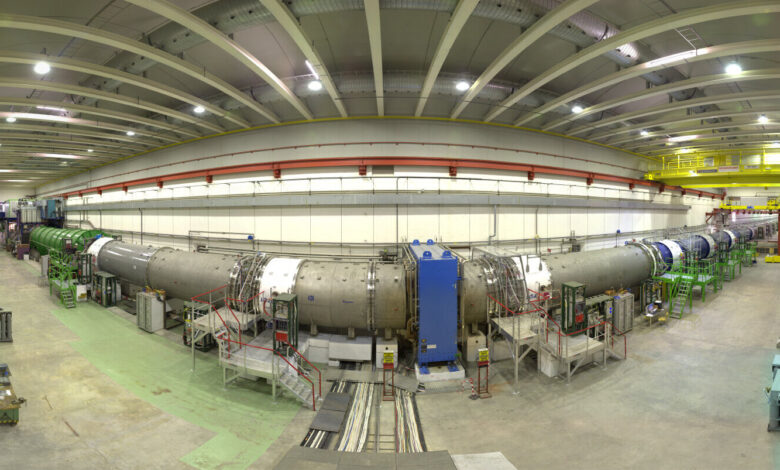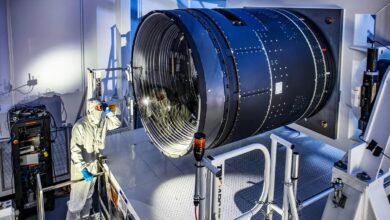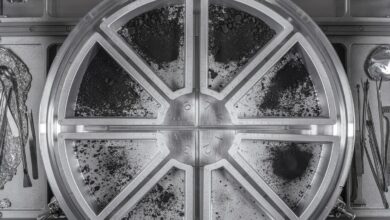
The NA62 experiment is 270 metres long and includes a 120-metre-long vacuum tank, shown here, housing several of the particle detectors. (Note: the experiment axis is a straight line, the curving of the tank is an optical effect of the photo.) Photo Credit: CERN
SocietyTechnology Switzerland“Ultra-Rare” Decay Process May Help Solve the Mysteries of Our Universe
Scientists at Switzerland’s European Organization for Nuclear Research (CERN), one of the largest scientific research centers, have found the first evidence of a rare particle decay of a positively charged kaon – which may finally help explain dark matter and other mysteries of the universe!
“This kaon decay process is … very difficult to capture and holds real promise for scientists searching for new physics,” explains Professor Cristina Lazzeroni, Particle Physicist at the University of Birmingham, UK, adding that the process will help scientists “find new ways of understanding our universe.”
To date, scientists have relied on the Standard Model of particle physics – a theory developed in the 1970s that has successfully predicted a wide variety of phenomena. But, as particle physicist Mark Thomson explains, the ultra-rare kaon decay can lead to new physics and help solve mysteries that are beyond the capabilities of the Standard Model, such as “the nature of dark matter and the origins of the matter–antimatter imbalance in the universe”.



